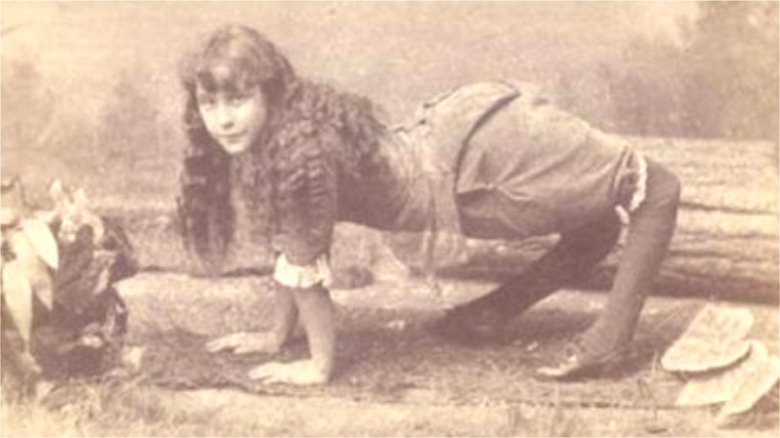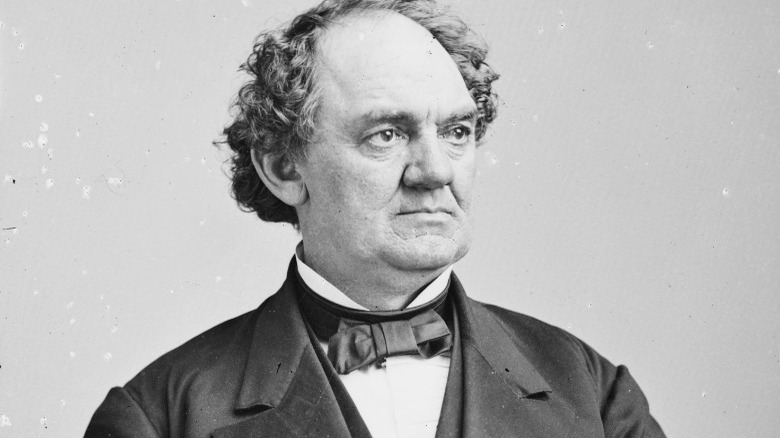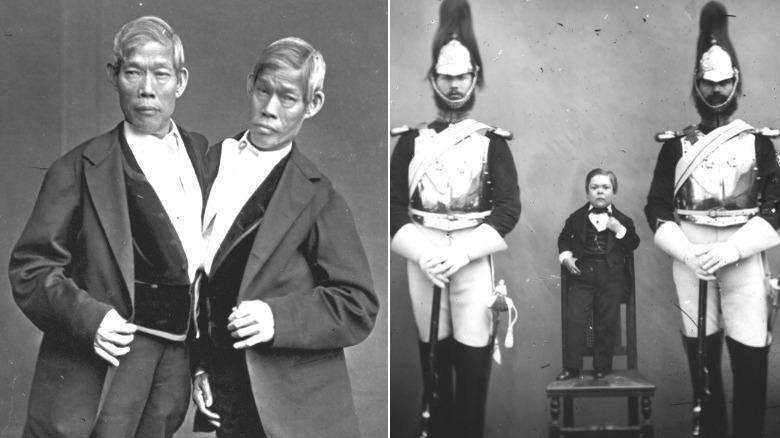Meet Ella Harper, A Vintage Side Show Star With A Wild Talent
Circuses and sideshows have a complicated yet fascinating history in the United States. These shows often featured animal acts, trapeze artists, and magicians who performed for patrons who came to be entertained. The first circus arrived in America during the 19th century from England, and once here, it transformed into a prosperous business venture (per Arcadia Publishing).
Alongside the booming circus industry existed a smaller subset of performances referred to as sideshows. These exhibitions often featured performers who possessed either unusual talents or unique physical appearances. Some of the more fascinating troupers included those that were either taller or smaller than average, had tattoos, or possessed something else that was atypical for the human body. One of the biggest sideshow stars of the day was a young lady named Ella Harper, also known as the Camel Girl. She managed to leverage her exceedingly unusual appearance into a career that allowed her to make tons of money and retire young.
Early Life
Ella Harper was born on January 5, 1870, in Hendersonville, Tennessee, to William and Minerva Ann Childress (per All That's Interesting). She had four other siblings, including a twin brother who reportedly died by the time he was 3 months old (via Historic Mysteries). Though her parents had multiple children, it was very obvious when their daughter was born that there was something different about her.
Harper was born with an extremely rare medical condition known as congenital genu recurvatum. That tongue twister of a name simply means that her knees bend backward instead of forward. Because of the severity of her condition, it was more comfortable for her to walk on all fours with the assistance of her hands. She was the only one of her siblings to be born with this disability, and under normal circumstances, this would have made life extremely difficult for her. However, young Miss Harper managed to make her unusual appearance work for her instead of against her when she joined her first sideshow at the age of 12.
What Exactly Is a Sideshow?
The concept of a sideshow dates back centuries, though they are not generally as popular today as they once were. Legendary American showman P.T. Barnum is often credited with featuring peculiar-looking humans in his sideshows as early as 1835 in the United States (per International Independent Showmen's Museum). In 1868, Barnum took his show on the road and compiled a large number of unusual items and performers that put his traveling circus on the map.
By the early 20th century, Barnum's show had undergone a series of name changes, but one thing stayed consistent, and that was the presentation of his sideshow. At the peak of the circus industry's popularity, sideshows were purposely placed in front of the Big Top, where the main show was presented. Though they were not necessarily the main event, crowds were fascinated by the strange performers they encountered and generally came back for more.
Medical Rarities Could Make Big Money
During this time period, if you were born with some sort of disability or deformity, life was often significantly more challenging. As medicine had not progressed far enough to treat many of these issues, people were often forced to adapt to them. However, even if they did manage to function well, it did not necessarily change the fact that they were different from the general population. It also did not always protect them from cruelty or ridicule. As such, some turned to the sideshow business to support themselves.
There were many like Ella Harper, who became circus and sideshow performers to make a living as traditional avenues may not have always been available. For example, P.T. Barnum's sideshows featured the likes of General Tom Thumb (above right), who only stood at about 25 inches tall and was one of Barnum's top performers. There were also conjoined twins Chang and Eng Bunker (above left), the Bearded Lady Annie Jones, and Zip the Pinhead, who all worked in sideshows most of if not all of their lives.
Life on the Road
Ella Harper joined her first circus in October 1882 and began performing in the areas around New Orleans and St. Louis (per Historic Mysteries). Her unconventional physical posture caught many people's attention, and they became more and more fascinated by her condition. By 1886, she was asked to join W. H. Harris' Nickel Plate Circus, and it was here that she acquired the nickname the "Camel Girl" due to her appearances with camels during her shows.
People began to come from all over to see the Camel Girl and her unusual legs. Before her performances, the audience would receive a card explaining her condition and why she walked the way she did. Harper's image began appearing in advertisements, and people were encouraged to see her while they could, as she was reportedly going to be leaving the circus life at the end of 1886 to pursue an education. She was so popular that she earned $200 a week, which would be equal to $5,000 a week today.
Retirement and Later Life
By the end of 1886, Ella Harper was able to leave the sideshow life and pursue her education (per Historic Mysteries). She was a full-fledged retiree by the time she was 16 years old and basically disappeared from public life. Almost 15 years passed before any trace of her came up again.
According to historical civil records, Ella Harper returned to Tennessee and lived with her mother until she married in 1905. Her husband was a teacher and bookkeeper named Robert Savely, and the couple had a daughter named Mabel, who tragically died when she was 6 months old. Ella Harper then lived out the rest of her days alongside her husband before succumbing to colon cancer on December 19, 1921, at the age of 51. She is buried in Springville Cemetery in Nashville, Tennessee.





